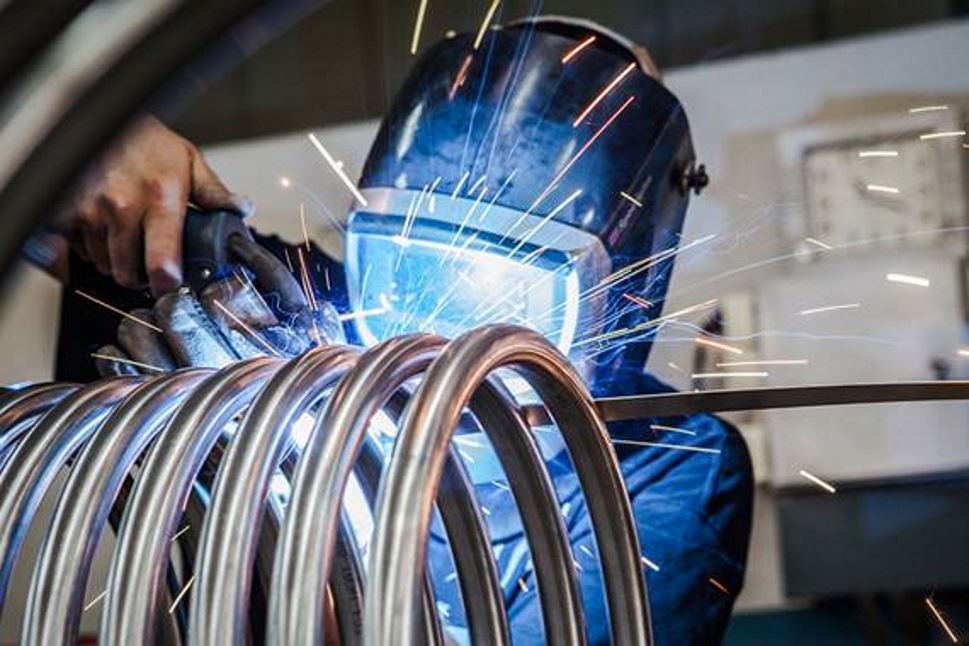Our best gas for MAG welding stainless steel
Our best gas for MAG welding stainless steel
Our all rounder for stainless steel MIG/MAG welding
Our best gas for TIG welding stainless steel
Book a free welding gas demonstration with our team

There are some core materials required to MIG weld – welding machine, filler wire, welding gas and PPE. There are also some core safety rules that need to be observed and surface preparation required before welding can commence.
In summary, an electric motor continuously feeds consumable filler wire through the welding torch into the arc, and the power source keeps the arc length at a pre-set value. This allows the welder to concentrate on ensuring a complete fusion of the joint. Most power sources for MIG/MAG welding processes are known as constant voltage machines.
Stainless steel can be difficult to weld as the metal conducts heat slower than carbon steel increasing the risk of distortion, burn-through and oxidisation. A clean workplace is essential as stainless steel is vulnerable to ferrous contamination. Likewise, spatter should be kept to a minimum to avoid damaging the protective chromium oxide layer.